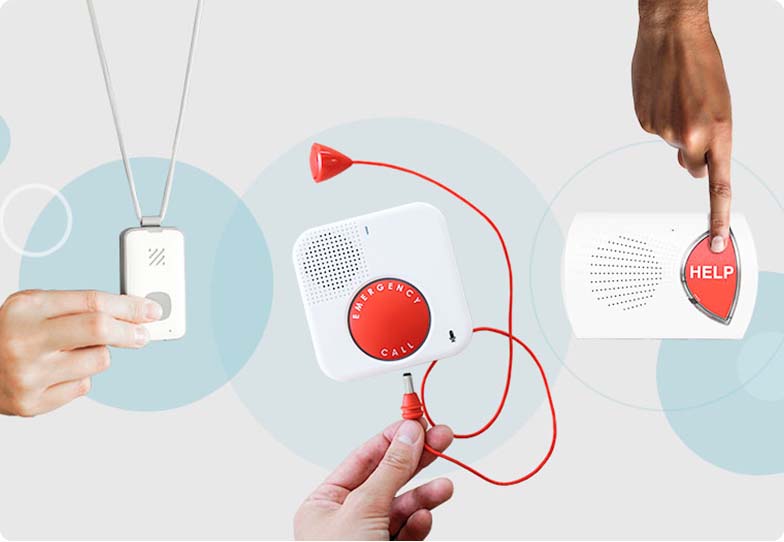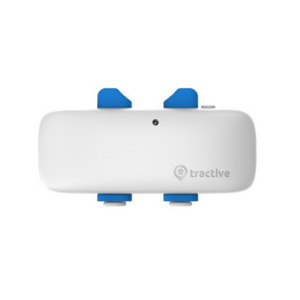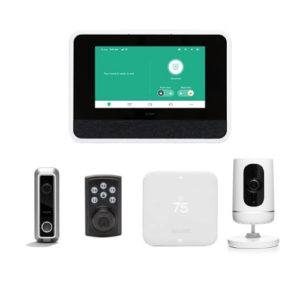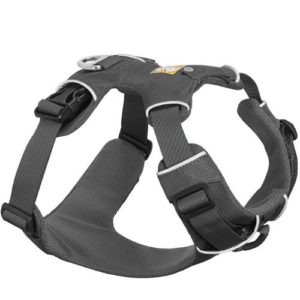About to go on an adventure with your furry friend? Here's how to travel safely with your pets, whether it's to the corner to get a puppuccino, or around the world.
Tips for Traveling Safely With Your Pet
SafeWise experts have years of firsthand experience testing the products we recommend. Learn how we test and review.
Sign up for our free weekly newsletter to get the best safety news, product info, and deals.
By signing up, you agree to our Terms and Conditions and Privacy Policy.
How to travel safely with your pet
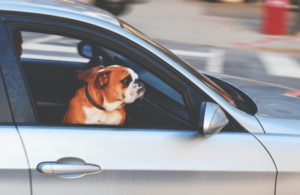
Airline travel with pets
Flying with your cat, dog, or other small animal doesn’t have to be stressful if you know what to expect. According to the TSA, you can bring your pets onboard and through security screenings, but there are a few things to remember for the best pet travel safety:
- Keep your pet in your arms, on a leash, or both.
- Do not put your pet in the X-ray machine—just send their crate through empty.
- Walk your pet through the metal detector then proceed to your gate.
Pro tips for flying with pets
Holiday deal effective as of publication date. Offers subject to change.
Every airline has its own policies and prices for pet seats. Some will allow your pet to ride in the cabin with you, while others may make them ride in the cargo hold. Before you board, be sure your pet carrier is TSA-approved and approved by the airline you’re flying with.
Update their info and label their carrier. This tip applies if you’re storing your pets in the cargo bay. Make sure their vaccinations and microchip are up to date. A GPS collar, recent pictures, and a health certificate or Certificate of Veterinary Inspection can also be helpful when traveling with cats and dogs.
Take direct flights when possible. It will cut down on time and stress for you and your pets, especially if they are larger and may need to stay in the cargo hold. You’re less likely to lose your luggage (and them) with a direct flight to your destination.
Do not sedate them. Unless your veterinarian recommends it, avoid sedatives. The effects of medication combined with the stress of high altitudes can hurt your pet.
Avoid flying with “snub-nosed” pets. According to the Humane Society, pets like pugs, Pekinese dogs, or Persian cats should avoid flying when possible. These short-faced animals can suffer heatstroke and oxygen deprivation in a cargo hold or cabin of a plane. If you have a pet like this, it’s best to stay on the ground while traveling.
Know your airline’s pet policy. Pet policies differ from airline to airline. Reduce unpleasant surprises by preparing for the charges and restrictions attached to air travel with pets. Here are the pet policies of some of the US’s most popular airlines:
Check out Lemonade pet health insurance; it's one of the most affordable options available, with customizable policies starting at $10/mo.
Car travel with pets
Dogs tend to revel in car rides, while cats usually aren’t as excited about getting in a vehicle. But no matter what your pet’s attitude is towards car travel, you still need to keep them happy and safe in the car.
Keep them securely in the car. Your pup might want to stick his head out the window, but it’s best to keep them inside the vehicle. It may be fun, but it’s also an easy way for them to get injured or allow debris to fly into their face, mouth, or eyes. Use a GPS collar for your pet to keep track of them if they do get out of the car.
Buckle them up. Leaving your animals unrestrained in the car is dangerous for you and them. Cats should remain in their crates, which should be buckled with a seatbelt. You can also find special car harnesses and other gear to keep your pups in place.
Keep them in the back seat. Just like human babies, your fur babies are too small to ride in the front. If you were to get in an accident while they were in the front seat, the impact of an airbag could injure your pet. Keep them buckled up and safe in the back seat when possible.
Plan ahead for your trip. You should never leave your pets alone in the car, even for a short time. So it’s smart to bring a friend or choose pet-friendly locations where you can bring them inside. Start by looking for pet-friendly pit stops to give them a chance to stretch and use the bathroom. Make pet-friendly hotels and restaurants destination spots for your trip too.
Get them familiar with the crate. If you’re taking a long trip, your pet will have to get used to being restrained or confined for hours at a time. Cats can be especially tricky to travel with on the road. To get them acclimated, take them on small drives and make their crate feel like a familiar place so they can more easily handle the stress of being in the car.
Don't leave them alone. A can warm up inside 20 degrees in just 10 minutes. So even if it's comfortable outside, the inside of a car can get sweltering fast. Imagine the heat if you're wearing a fur coat! Never leave your pet alone in the car unless the AC is running.
Other travel with pets
Pet owners love having their furry friends along for the ride. Here are a few more tips for different kinds of travel with your pets.
RV travel with pets
Life on the road and in the great outdoors is great for humans and animals alike. When you bring your pets with you, be sure to take the same precautions you would with the rest of the family. Keep your pets restrained or in their carrier while the vehicle is moving. After all, operating the vehicle should be your priority no matter who your travel companions are.
Before leaving, don’t forget to pack their bags too. Leashes, pick-up bags, toys, food, water bowls, clothes, and outdoor gear will be necessary for your journey. Here are our picks for the best outdoor safety gear for dogs.
Even cat owners can bring their feline friends along. Luna the cat lived a life on the road with the help of a little leash training and patience from his parents.
Read our guide on preventing RV theft to ensure the adventure goes smoothly.
Train travel with pets
Whether you’re going across the country or just across town, trains are a great way to get around. Amtrak changed its pet policy to allow pets up to 20 pounds, allowing you to take that long-distance ride with your best friend. Check the local policies before boarding if you’re hopping on your local subway or light rail with your pet.
Knowing the rules isn’t just important for you and your pet, but for other passengers as well.
Other considerations
Here are some more things to consider before you hit the road:
- When preparing for your trip, visit the vet to ensure your pet is fit for travel. Factors like age and medical conditions can prevent them from being happy anywhere but at home.
- If they’re deemed safe to fly, ride, or set sail, you should update their vaccinations, medical records, and microchips.
- Ask the vet how to notice your pet's stress levels while traveling and tips on how to calm them.
- Put food and water in their crate to keep them happier throughout your trip.
- If you decide against taking your pets, find a pet sitter instead to keep them company while you’re gone.
Check out Lemonade pet health insurance; it's one of the most affordable options available, with customizable policies starting at $10/mo.
Compare the top pet safety products
Amazon.com price as of post date. Offers and availability may vary by location and are subject to change. Read full disclaimer.
Recent Articles
